Definition of a Dinosaur
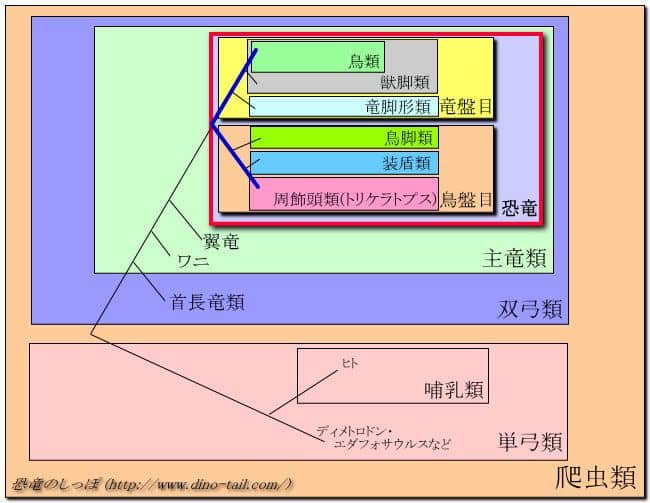
["The most recent common ancestor of birds and Triceratops, and all of its descendants"] = [Dinosaurs].
The current academic definition of a dinosaur is "the most recent common ancestor of birds and Triceratops, and all of its descendants."
The use of [Triceratops] as a genus here has no special meaning itself; it defines "dinosaurs" as the group derived from the most recent common ancestor of [Saurischian theropods (birds)] and [Ornithischian marginocephalians (Triceratops)].
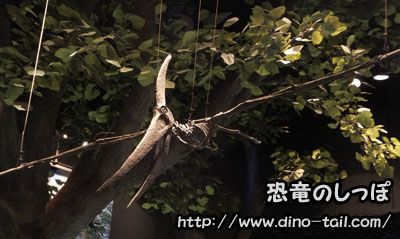
Plesiosaurs, represented by Plesiosaurus, and pterosaurs like Pteranodon are not scientifically considered dinosaurs.
This is because they belong to groups that diverged before [the most recent common ancestor of birds and Triceratops].
According to the definition of cladistics, modern birds such as pigeons and sparrows are also included as "a type of dinosaur."
It was once thought that "birds evolved from dinosaurs," but current taxonomy holds that "birds are dinosaurs (theropods)." Therefore, when discussing the mass extinction event that occurred about 66 million years ago, the more accurate expression is "non-avian dinosaurs became extinct." We are still living with dinosaurs today in the form of sparrows and pigeons.
Modern birds are classified as: Reptilia > Diapsida > Archosauria > Dinosauria > Saurischia > Theropoda > Tetanurae > Coelurosauria > Maniraptora.
The same [Maniraptora] group includes Oviraptor, Deinonychus, and Velociraptor.
Dinosaur Feature ①: Eggs Resistant to Drying
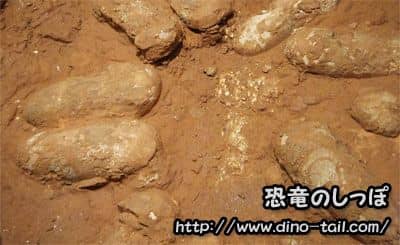
One of the factors for the dinosaurs' success on land was that they were animals that laid hard-shelled eggs.
They covered their eggs with a hard shell and stored amniotic fluid (the "egg white" part of a chicken egg) inside to nourish the embryo. Unlike amphibians, which need water for spawning, dinosaurs could lay their eggs on dry land.
The hard shell also provided greater physical strength, which may have allowed them to, for example, bury the eggs to maintain temperature or hide them from predators.
It is known that the inland environment during the Late Triassic, when dinosaurs appeared, was dry. The ability to reproduce with eggs resistant to drying was one of the factors that allowed them to expand their habitat on land.
Dinosaur Feature ②: Bipedalism
Most modern reptiles, like crocodiles and lizards, have legs that extend sideways from the hip and then bend at the joint at almost a right angle to touch the ground.
In contrast, dinosaurs' legs extended directly beneath their bodies.
This was more efficient for supporting their weight, which made them significantly faster. It also enabled a bipedal posture.
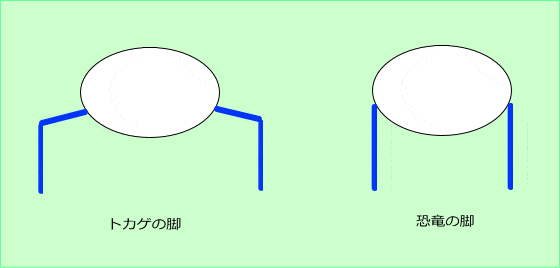
Dinosaurs had their axis directly beneath their bodies.
The posture with legs directly beneath the body had another advantage: it allowed them to walk without compressing their respiratory system—the lungs.
Quadrupedal reptiles and amphibians with legs extending sideways move by wriggling their bodies. This movement during locomotion compresses the lungs, causing breathing difficulties. It is known that modern lizards also hold their breath while moving.
A bipedal posture eliminated the need to wriggle the body when walking. They acquired a way to take in oxygen—breathe—while walking. It is believed that the appearance of bipedal reptiles—the group that would later be called dinosaurs—during the low-oxygen conditions of the Middle to Late Triassic (atmospheric oxygen composition of 10-12%, compared to 21% today) was not a coincidence.
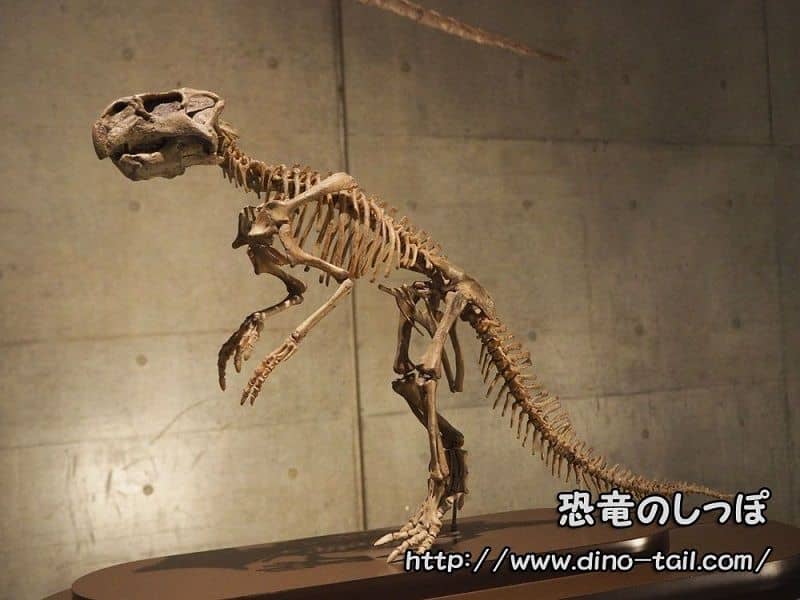
An early ceratopsian. It was bipedal.
Many dinosaur species were "quadrupedal," but it is thought that they "secondarily transitioned to quadrupedalism to support their larger bodies." Since they had acquired the posture of placing their legs directly under their bodies, there was no need to wriggle their bodies (which makes breathing difficult) while walking, and this must have been advantageous in the low-oxygen era.
It is presumed that even in groups generally known as quadrupeds, such as sauropodomorphs, thyreophorans, and marginocephalians, "early genera (species) were capable of bipedalism."
For example, Plateosaurus (an early sauropodomorph from the Triassic), Lesothosaurus (an early thyreophoran from the Early Jurassic), and Psittacosaurus (an early marginocephalian from the Early Cretaceous) were capable of walking on two legs.
Dinosaur Feature ③: Hole in the Pelvis
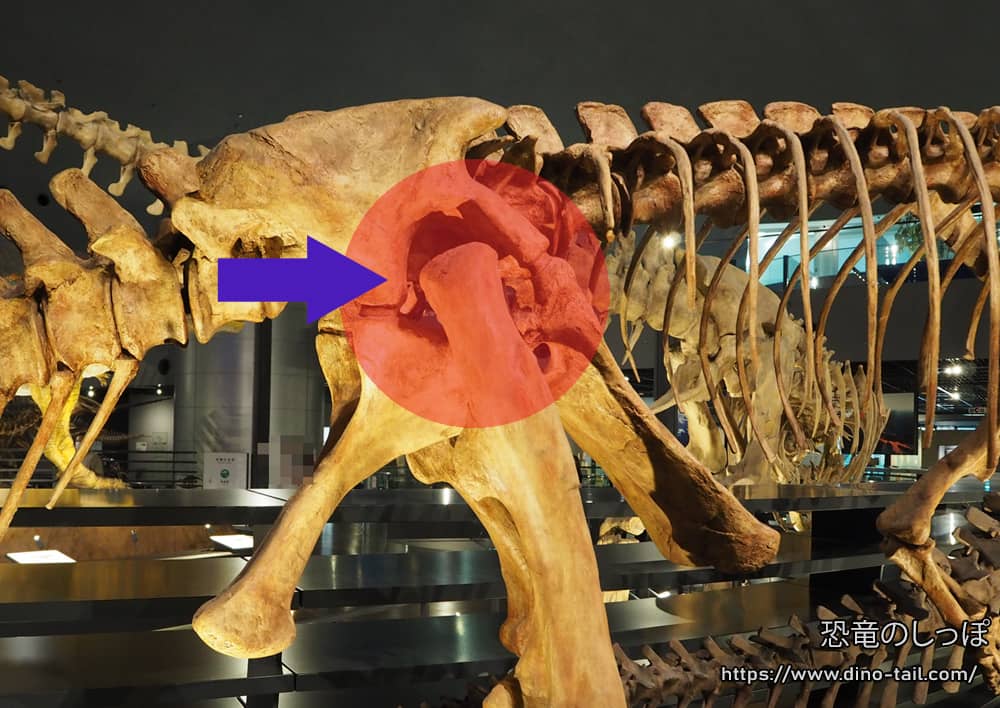
The dinosaur pelvis (hip bone) has an open socket where the head of the femur fits securely, whereas the pelvis of most reptiles like crocodiles and lizards does not have a hole. This is described as "a dinosaur characteristic is a perforated acetabulum."
The fact that the leg was firmly set in the pelvis may have contributed to the dinosaurs' speed and their ability to grow large (stabilizing a large body).
